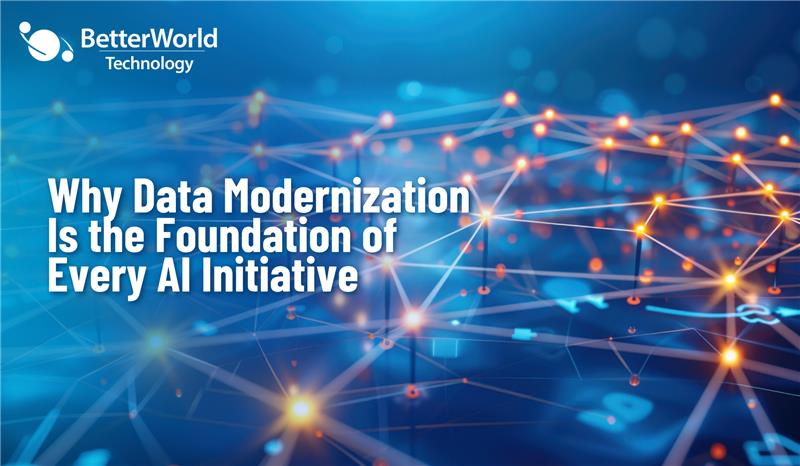Maximize Your App Innovation Quotient
- John Jordan

- Jul 15
- 6 min read
Evolving with technology is key for companies to stay relevant, especially with the buzz around generative AI. However, rapid change without proper planning can lead to setbacks and significant financial losses. To truly benefit from generative AI, it's important to first update your applications and data systems. This article shares a framework for removing innovation barriers, covering the seven phases of innovation and the generative AI lifecycle. It also provides strategies for success, from building models to deploying and operating them, and how to find the best use cases for your business.
Why Innovation Matters
Technology is changing faster than ever. Some say that in the next five years, we'll see more technological change than in the last 25. This trend is only speeding up. So, how do organizations keep up and use these changes to their advantage? It's about preparing for change and being flexible. Innovation is a must for any organization. If companies don't change, they often get left behind by newer, more adaptable competitors.
Our main idea is that to really use new tools like generative AI, organizations first need to update their applications and data. This means getting past old technology problems and moving to a more modern setup. This way, they can be ready to use new tools in smart ways. Being innovative also means having a culture where people question old ways of doing things and are open to new methods. The tools often come after the culture is ready.
Many IT and technical teams spend almost all their time on daily operations: supporting applications, dealing with budgets, security, and tech support. This leaves little to no time for innovation. When teams are stressed and focused on fixing problems, they can't think about new ideas. To change this, we need to reduce their daily workload. Even a small reduction in time spent on technical debt or support can free up mental space for teams to think about expanding or changing their work. This kind of change needs both IT and business units to work together.
Breaking Through Innovation Barriers
To be truly innovative, we need to get rid of the things that stop us, like old technology. This means adopting modern approaches, strategies, and tools. It's hard to know how to do this if you only have a big, far-off vision. Instead, it's better to plan carefully, figure out what your strengths are, and focus on those. For example, no business wants to spend all its time managing data centers. Moving to the cloud can reduce this burden, letting teams focus more on delivering value through their applications instead of managing the underlying technology.
When planning modernization efforts, it's important to break down big goals into smaller, manageable steps. You should also set clear metrics to track your progress. These metrics could include reducing costs or improving delivery speed. The goal is to track how you're moving towards your future vision in small, measurable steps. Each step should have a specific, clear goal. For instance, you might automate more of your infrastructure using tools like Terraform, or move away from virtual machines to cloud-native technologies. It's important to remember that not all old technology needs to be updated. Modernizing just for the sake of it can be a waste of time and money. Focus your efforts on areas that will give you the most benefit.
Finally, regularly check if you're still on the right path. A modernization journey can take years, and things change. Make sure your future vision is still realistic and that your current plan will get you there.
The Innovation Lifecycle
Innovation is about how we bring new ideas to the market and grow. This often happens in small steps, not just big "light bulb" moments. New ideas are risky, and many fail because they can't be scaled or don't meet customer needs. It's hard to plan for innovation because it can be chaotic. Some companies avoid it because it seems too risky, especially in mature markets. But even for these organizations, innovation is still important.
To drive innovation effectively, it often needs to start from the ground up. Individual employees often have the best insights into new possibilities. It's important to create opportunities for them to share ideas and work together. Programs like hackathons or "Shark Tank" style competitions can help bring new ideas forward. Leaders need to be involved to make these programs successful. There also needs to be a culture of learning, where failure is seen as a chance to learn, not just a loss. The goal is to reduce the impact of failure by limiting investment until an idea is proven. This means having a clear plan and vision that comes from both leadership and individual contributors.
When bringing innovative products to market, there are three main areas to balance:
Technology: Can the idea actually be built? Can your AI models predict the outcome you want? This is usually the easiest to prove.
Product Use: Do customers need this? Is there a real demand for it? This requires more investment to validate.
Profitability: Can you make money from this? Is the investment needed to make the product work in the market profitable for your business? This is often the hardest part.
Organizations need to go through these steps logically to avoid building entire systems around ideas that won't be profitable. Many companies fail because they can't scale their innovations to a profitable level.
Generative AI and Its Impact
Generative AI, like large language models, is trained on huge amounts of information. These models can generate and understand human-like text, images, and music. They have broad uses because they can recognize patterns in data. What makes them even more powerful is their accessibility. Tools like ChatGPT make it easy for anyone to use these capabilities. You can also customize them through "fine-tuning" (training over an existing model) or "prompt engineering" (giving context to the model so it responds as expected).
Generative AI can automate many work activities. Experts predict that between 2030 and 2060, half of today's work could be automated. This technology can boost productivity, for example, by helping with coding or generating content. This leads to a better return on investment over time.
Key Takeaways:
Productivity Boost: Generative AI can automate tasks, freeing up employees for more complex work.
Broad Applicability: It can generate text, images, speech, and music, making it useful in many areas.
Accessibility: Tools like ChatGPT make it easy for anyone to use.
Customization: Models can be fine-tuned or given specific context to meet unique needs.
Generative AI Use Cases
There are many ways to use generative AI. We've already talked with customers about these situations and are working on projects in several areas. If a task involves generating text, images, or speech and can improve productivity, it's likely a good fit for generative AI. Some examples include:
Code Optimization: Tools like GitHub Copilot help generate code more efficiently.
Risk Analysis: Identifying potential risks in documents like contracts.
Content Creation: Generating various forms of content.
These capabilities can be used in two main ways:
Out-of-the-Box Integration: This is simpler. For example, Microsoft is embedding AI into Office 365. This can be used for learning, AI governance, or general productivity. The main thing is providing the right data to customize the model. However, you need to be careful about trusting all results, as models can sometimes "hallucinate" or produce probabilistically correct but not factually accurate answers.
Custom Model Approaches: This involves building your own models or deeply integrating AI into applications. This is where you'll see more AI-powered applications in the future. It can involve training models for specific industries or domains, integrating with various data sources, and focusing on security. For example, you might build custom models for recommendation engines, chatbots, or call center support systems.
The Generative AI Lifecycle
To use generative AI effectively, follow a structured approach:
Identify the Business Challenge: Start by understanding your goals and why you want to use AI.
Choose the Right Model: Decide what kind of model you need to solve your problem.
Exploratory Response Analysis: See how the model responds and if you need to add more information.
Large Language Model Engineering: Decide whether to use embedding models, fine-tuning, or training from scratch.
Build and Deploy: Integrate the AI into your engineering process and deploy the solution.
Test and Validate: Make sure the solution meets your needs and works as expected.
Monitor and Iterate: Continuously monitor the model's performance and make adjustments as needed. This helps ensure the model remains effective and valuable over time.
This disciplined approach helps turn innovative ideas into production-ready solutions. It also supports a culture of ongoing innovation within the organization.
Model Building Approaches:
Retrieval Augmented Generation (RAG): Use your own data to give context to the model's responses. This is like telling the model, "Using my data, here's the kind of answer I expect.
Fine-Tuning: Retrain a small part of an existing model with your specific knowledge. This is useful when you have a clear idea of the information you want to embed into the model.
Custom Models: Build a model from scratch for a very specific domain, like healthcare. This is more complex and requires more computing power.
Deploying and Operationalizing Models:
When deploying models, consider cost, security, and how to get feedback. You need to know if the model is performing as expected and if its value changes over time. Scaling these solutions often involves creating centers of excellence or communities of practice to share knowledge and best practices.
Most organizations will likely focus on "using AI" by leveraging existing capabilities. However, some may choose to "do AI" by building their own custom models, which requires specialized expertise.









